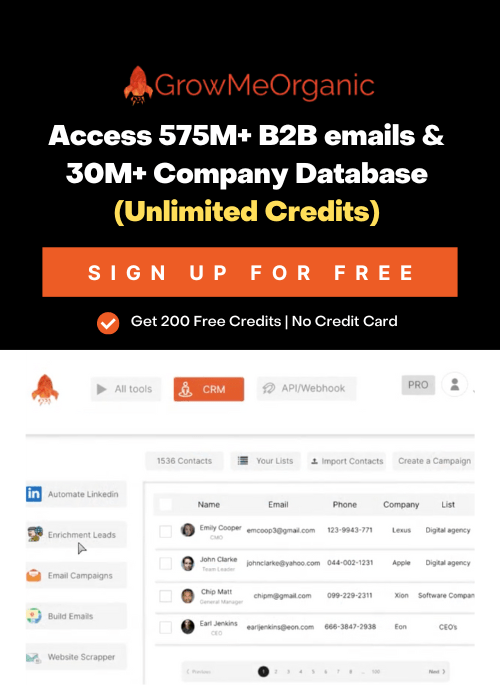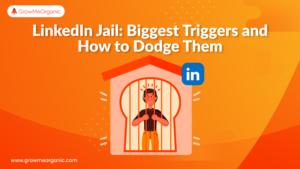Here is a scenario – You applied for your dream job, prepared well, gave your best interview, and the recruiter tells you, “We will get back to you.”
Relatable right? To be honest, you are not alone. Many people undergo this situation, even if the answer to their interview round may be a yes later.
So, should you ask the recruiter how was your interview? Yes.
Writing a follow-up email after an interview is an excellent way of building rapport and showing that you are different from others.
You can use this email to thank the interviewing people for their time before asking for the status. This may just increase your chances of getting that job.
But how long should you wait? Wait, we will discuss it all. Before understanding the timeframe, let’s first see how to write a follow-up email after an interview.
P.S. We have added a few templates to refer to when you write your next follow-up email.
6 Effective Steps Of How To Write a Follow-Up Email after an interview
Framing your thoughts in a sentence or email can be tough. After all, you would not want to write something that doesn’t sound professional or looks out of context. Here are six steps to help you write your follow-up email like a breeze. Let’s get started.
1. Create a Meaningful Subject Line
Your email’s subject line, which will be the first thing to notice, should specify the exact reason for your email.

If you want your email to get noticed and opened, you must write a meaningful subject line. Don’t be creative; just be straightforward and ensure the hiring person knows what the email is about.
Some subject lines to consider are:
- About the interview for [job title]
- Regarding the job interview for [job title]
- Queries regarding job interview for [job title]
- Inquiring about [job title] interview
- Thank you for the opportunity for [job title] interview
2. Polite Greeting
Every email must begin with a greeting and address your interviewer with their name. Additionally, you must always use a proper salutation.
E.g., Dear [Ms, Mrs, Mr] [last name], or you can even use first and last name as Dear [first and last name].
Addressing with Dear [name] is the most formal and polite greeting. Hello and Hi [name] are considered less formal.
3. Acknowledge the Context
Before you start writing the email body, you must acknowledge the context by doing either of the below:
- Reminding of the particular job interview, its date and time.
- Thanking the interviewer and showing gratitude for their valuable time.
- Recapping a vital discussion that happened during your interview.
While you do so, remember to be polite and sincere and use positive language to convey your words.
4. Restate Your Purpose
It is important to restate why you are writing this email for you and the interviewer to be on the same line. It can be:
- Getting your interview status update
- Sharing further resources, as discussed in the interview
- Asking questions
- Rescheduling your interview
- Restating your interest in the job position
Your purpose should be written in the initial part of the email body, preferably in the first paragraph.
5. Mention Clear CTA
A call to action can be written either directly (in an explicit manner) or indirectly (in an implicit manner).
If you want to be subtle without directly writing a proper CTA, an implicit way is the best. You can use phrases like:
- “I will wait for your reply”.
Conversely, explicit is when you directly tell the interviewer that you want specific actions to be taken on this email. The below phrases are examples of explicit CTA:
- “Please let me know a good time to discuss the matter with you.”
6. Sign Off
The last step is adding a professional ending to your email. The sign-up should be followed with your name. Some examples can be:
- Best regards
- Sincerely
- Cheers
- Thanks
Best regards and sincerely are considered more professional and appropriate, while thanks and cheers may be less formal.
When Should a Follow-Up Interview Email Be Sent (With Examples)
There can be three reasons to send a follow-up email after an interview.
- Immediately follow up with your interviewer.
- Follow up if you do not hear from the interviewer.
- To stay connected for networking purposes.
The ideal time can be decided for your follow-up email depending on the reason. As a thumb rule, no follow-up email should be sent without waiting for at least 24 hours.
1. 24 Hours After Interview
You can send your first follow-up email 24 hours after your interview, showing gratitude and saying thank you.
This email will be short and crisp. You can add a gist of your vital discussion during your interview round if needed.
| Subject – Thank you for the interview opportunity for [job title] Dear [interviewer name], I want to thank [company name] for allowing me to interview for the [job title] position. Meeting you and getting to know the business more was a true joy. I am thrilled about the opportunity and eager to move on with the employment process. Kindly inform me if there are any further requirements from my end. I appreciate your time. Waiting for a reply. Best Regards,[your name] |
2. 2-3 Days Post Interview
If 24 hours seems too early to send a follow-up email, you can wait 2-3 days before sending one. This email will be similar to sending the one after 24 hours.
Any email sent in the first week should convey gratitude for the opportunity. A quick thank you note is all that must be written.
Remember, do not write emails back to back; it may look unprofessional. You must maintain a gap of at least 1 week between your follow-up emails.
| Subject – Thank you for [job title] interview opportunity Dear [name], Thank you for the [job title] interview that was conducted [date] at [company name]. I am highly impressed by [mention a vital conversation that happened], which has made my decision to join your company firm. I am confident I will use my knowledge and skills to make your upcoming project successful. Please let me know the next steps. Thank,[your name] |
3. 1 Week After Interview
This is the most standard time to follow up. Generally, interviewers will ask you to wait for a couple of days or till all the interviews are completed for a reply.
1-week post-interview is the right time to send a gentle reminder showing your interest in the position.
| Subject – Inquiring about [job title] interview happened on [date] Hello [name], I hope this email finds you well. I wanted to know my interview status for [job title] on [date]. I had the pleasure of meeting you and learning more about the opportunity. I’d like to know about the next steps and if anything is to be done from my end. Thank you for your time. Sincerely,[your name] |
4. 2 Weeks Post Interview
It can be stressful not knowing your interview results even after 2 weeks. Don’t worry. Some companies have a longer interview process and may take more than a week to reply.
This does not mean you are not selected; they may have yet completed their lined up interviews.
In this email, you can take an explicit CTA approach and ask for a specific timeline.
| Subject – Still interested in your company’s [job title] Dear [name], I hope you are doing well. I wish to tell you that I am still interested in the [job title] at your company. Since my interview, I have read and learned more about your organization, which has increased my interest in this opportunity. I genuinely believe I am a good fit and can contribute to your company’s success. Please let me know when I can expect a status update for my interview. Thanks,[your name] |
6 Follow Up Email Templates with Examples
Now that you know what the interviewing person thinks of a follow-up email, here are a few scenarios and how you should draft an impressive one.
1. Follow Up After a Brief Interview
| Subject – Thank you for [job title] interview opportunity Dear [name], Thank you for taking the time to discuss the [job title] opportunity with me. I am excited about the role and joining your company post meeting you. I will be happy to use my experience and make your upcoming projects successful. Post our discussion, I am confident my background will help support the vision of [company name]. Please feel free to reach me and discuss the next steps. Best regards,[your name] |
2. Follow Up After a Long Interview
| Subject – Big thanks for our chat Hello [name], Thank you very much for your time on [date]. It was a great pleasure meeting you in person. Your words speak a lot about your company’s culture and values. I enjoyed discussing your desire for a client discussion partner who can add value and insight. Since our meeting, I’ve kept thinking about this intriguing problem. Over the years, I have handled many similar situations, and I am sure I can continue doing the same at [company name]. I am very particular about client relationships, which has been my forte in the last organization. I will be excited to share more about it in the further rounds. I will be waiting to hear from you. Thanks,[your name] |
3. Follow Up After No Response
| Subject – Following up on my interview for [job title] Dear [name], I hope this email finds you well. I would like to know my interview status for the [job title] position. It was great meeting you, and I am eagerly awaiting an update. Sincerely,[your name] |
4. Follow Up After Second Interview Round
| Subject – Thanking for the second [job title] interview round Hello [name], I want to thank you for the [job title] second interview round at [company name]. I understood more about the role and your expectations. I strongly desire to work for [Company Name] and am confident I can meet all your expectations. I am excited and looking forward to the next steps. Please let me know if you need any information from my end. Thanks,[your name] |
5. Follow Up With Other Job Offers In Hand
| Subject – Inquiring about [job title] interview Dear [name], I hope this email finds you well. I would like to tell you about job offers received from other companies. However, I strongly desire to work for [company name] as I was highly impressed with the vision shared during our discussion. I know that the recruiting process is still ongoing, but I would like to know how my application is progressing and when you plan to make a decision. Thanks for your time and consideration. Best regards,[your name] |
6. Follow Up With Multiple Interview Rounds Rescheduled
| Subject – Inquiring about multiple rescheduling for [job title] interview Dear [name], I hope you are doing well. My interview for the [job title] was scheduled for [date] originally, however, it was rescheduled due to an essential last-minute meeting at your end. This interview has further been rescheduled three times. Can you please confirm the date when it will happen? I am aware of the last minute ad hoc at workplaces and appreciate your time rescheduling the interview multiple times. I will be waiting to hear from you. Thank you for your time. Best regards,[your name] |
4 Tips for Sending Effective Follow-Up Emails
The primary goal of the follow-up email is getting a response on the following steps after the interview. Here are some tips to make the writing process easy for you.
1. Keep It Short
Short and crisp is always better. Interviewers are busy and may not be interested in reading a long follow-up email.
So, keep your email short and a maximum of 2 paragraphs. Most people may think a long email means more commitment; however, this is not true.
Nobody has the time to read a long email, and they may just not read it, looking at its length. So, keep your email concise.
2. Check Grammar and Spelling
Incorrect spelling and grammatical mistakes are the last things you want in your email. So, always ensure that your writing is pristine by passing it through a robust online tool like grammarcheck.ai.
However, grammar isn’t the only thing that you should check. Other elements include:
- Resources
- Names
- Email addresses
If you include any attachments or links, ensure they are correct and open.
3. Don’t Send Many Emails
As we mentioned before, there must be a gap of at least one week before you send the next follow-up email.
If you get a reply to your first email, you can send a response accordingly. It will make you look unprofessional and pushy if you send too many emails.
If you have already sent 2-3 follow-ups and have not received any reply, it is better to look for a different job opportunity.
4. Write As Per Company’s Tone and Culture
To impress your interviewer and get a response, follow the tone of the email you received from their end. Check the vibe in their email and try to follow it.
This is also an excellent way of understanding the company’s culture. Following the company’s tone and culture will make you a favorable candidate.
Keeping it formal and professional is best if you need clarification on the tone.
What’s Next?
A follow-up email shows your professionalism and reinforces your interest in the position. It can also be a perfect opportunity to add any vital element left to discuss during the interview.
Remember, if the interviewer had informed you about the response timeframe, respect it and wait for it to get over. Writing an email before can reflect your impatience and may work the opposite.
FAQs
Q 1. Is it ok to send a follow-up email immediately after an interview?
After an interview, waiting 24 hours before sending a follow-up email is advisable. This avoids appearing unduly eager or impatient, demonstrates professionalism, and gives time for introspection.
Q 2. How to politely ask for interview feedback?
“Thank you for the opportunity, I would be grateful for any input you could provide me to help me get better for next time”. This is the best way to ask for interview feedback politely.
Q 3. When is the right time to start with an interview follow-up?
The ideal time to begin an interview follow-up is 24 to 48 hours following the interview. This gives the interviewer time to think while demonstrating your attention and gratitude.
Q 4. How many times should you write an interview follow-up email?
You should write one after the interview and keep a gap of at least a week between two follow-up emails. It will be best to write up to 3 or 4 follow-up emails.
Q 5. Can attachments be included in the interview follow-up emails?
Attachments, such as a portfolio or pertinent papers, can be in a follow-up email if asked for or indicated during the interview. If not, send a brief email without any attachments.
About Post Author
Anant Gupta
Growth Hacker, Marketing Automation Enthusiast & Founder of GrowMeOrganic







